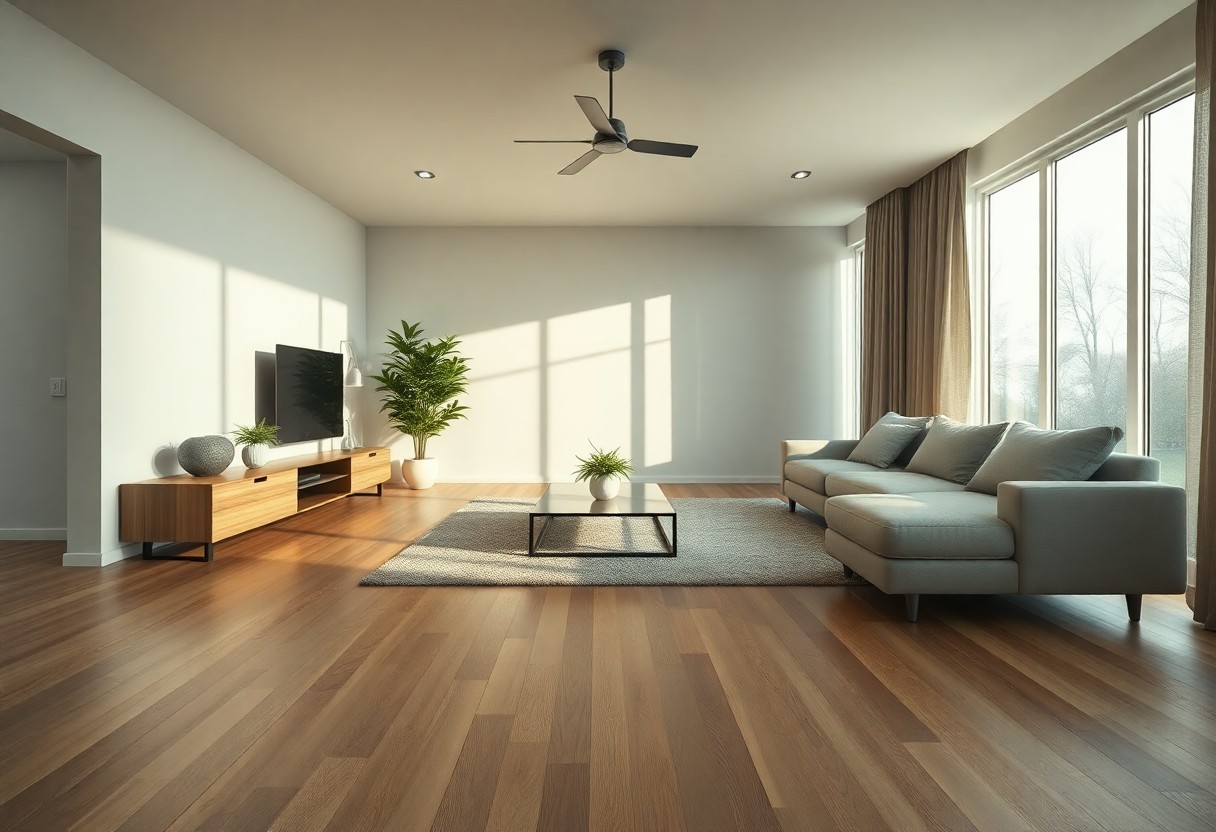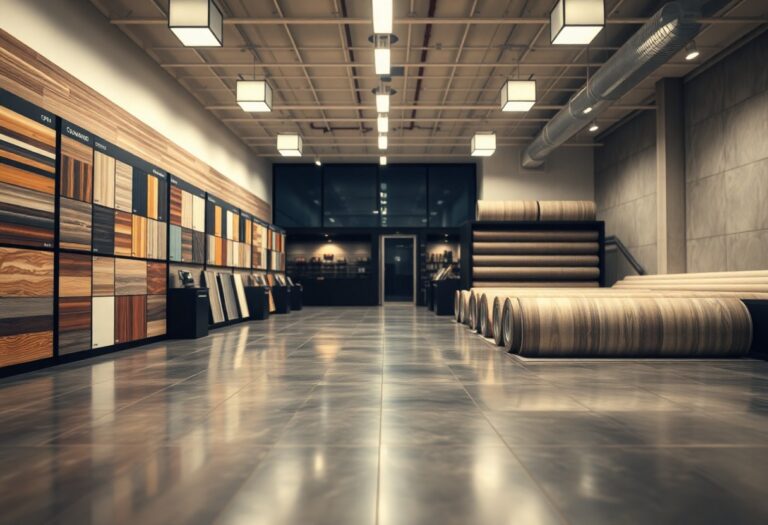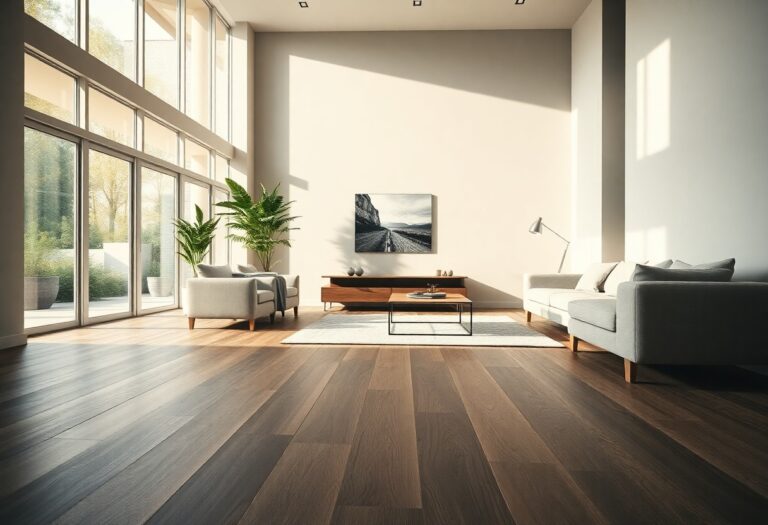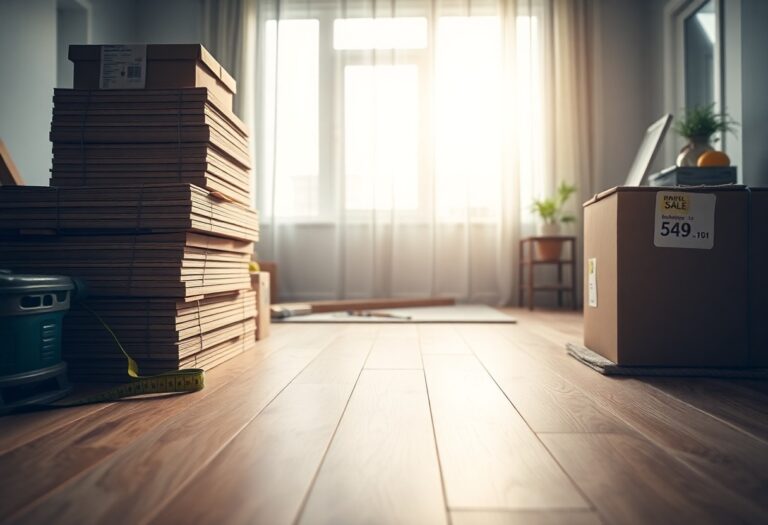Most homeowners today seek flooring solutions that blend aesthetic appeal with functional benefits. Engineered flooring offers you a versatile and stylish option that complements modern design while providing durability and ease of maintenance. With its layered construction, it resists moisture and temperature changes, making it suitable for various environments in your home. Explore the advantages of engineered flooring to enhance your space with a perfect balance of beauty and practicality.
Understanding Engineered Flooring
Engineered flooring combines the beauty of real wood with enhanced durability and versatility, making it an appealing choice for homeowners. This flooring type consists of multiple layers that provide increased stability while maintaining an authentic wood aesthetic, suitable for various environments including high-moisture areas. The innovative construction allows for easier installation and greater adaptability to changes in temperature and humidity compared to solid hardwood.
What is Engineered Flooring?
Engineered flooring is a multi-layered wood product designed to offer the look and feel of solid hardwood while enhancing performance. Typically, it features a top layer of real wood veneer, backed by layers of plywood or high-density fiberboard, which adds strength and stability. This construction method helps reduce the risk of warping and cracking, making it a reliable flooring option for modern homes.
Components of Engineered Flooring
Engineered flooring comprises several layers, each playing a key role in its integrity and performance. The top layer, or wear layer, is made of natural hardwood, while the inner layers provide support and resistance to humidity and temperature changes. This layered construction not only enhances durability but also allows for a variety of wood species and finishes to suit your design preferences.
The wear layer on top typically ranges from 0.6mm to 5mm, determining how many times the floor can be sanded or refinished. Beneath that, the core layers, made from plywood or high-density fiberboard, contribute significantly to stability and moisture resistance. Many engineered floors also incorporate advanced technology for improved sound insulation and easier maintenance, making this flooring choice both practical and stylish for your home.
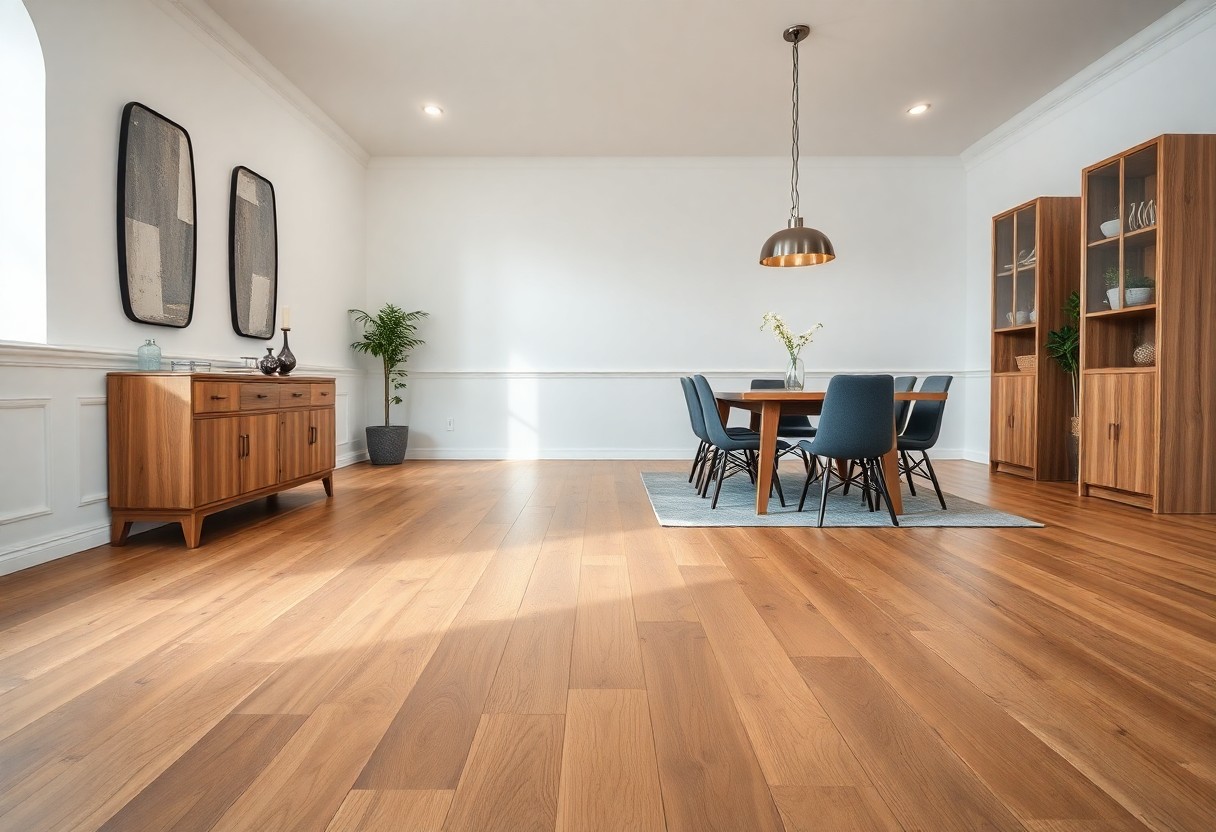
Aesthetic Appeal of Engineered Flooring
Engineered flooring offers an inviting blend of sophistication and warmth, enhancing the overall ambiance of your home. With its authentic wood appearance and rich textures, it creates a striking visual impact that complements various design styles. Whether you prefer sleek modern lines or rustic charm, engineered flooring provides the perfect foundation for your interior décor, marrying aesthetics with innovation.
Variety of Designs and Finishes
Engineered flooring comes in an extensive range of designs and finishes, catering to your unique style preferences. From luxurious oak and walnut to contemporary gray tones, the choices are limitless. You can select matte or glossy finishes, allowing you to tailor the flooring to match your vision while ensuring it elevates the beauty of your space.
Seamless Integration with Modern Interiors
Modern interiors thrive on cohesion and style, and engineered flooring effortlessly ties these elements together. The planks can be installed in various layouts, such as herringbone or wide planks, creating a customized look that fits your aesthetic. Moreover, advanced installation methods, like floating floors, allow for quick setup and adaptation to your existing space.
Seamless integration is key to achieving a harmonious design in your home. With engineered flooring being available in various widths and lengths, you can create a uniform look that flows effortlessly from room to room. Additionally, its ability to be installed over radiant heating systems or existing flooring enhances its versatility, making it suitable for open-concept spaces that require a strategic blend of practicality and style. This adaptability means your flooring can work in tandem with other design elements, establishing a cohesive and inviting environment throughout your home.
Practical Benefits of Engineered Flooring
Engineered flooring offers numerous practical advantages that make it an ideal choice for modern homes. Its construction allows for versatile installation methods, whether you’re laying it over concrete or existing floors. This flexibility not only saves time but also reduces costs associated with flooring projects. Additionally, the ease of maintenance is a major draw; regular sweeping and occasional mopping keep it looking fresh, enhancing your home with minimal effort.
Durability and Longevity
Engineered flooring boasts a multi-layer construction that provides remarkable durability and longevity. Unlike solid hardwood, which can be prone to warping or scratching, engineered wood withstands heavy foot traffic and everyday wear. Many products come with warranties of up to 30 years, ensuring your investment pays off in both style and endurance.
Moisture Resistance and Stability
Engineered flooring is designed to resist moisture, making it suitable for areas prone to humidity, such as basements and kitchens. The layered construction reduces the risk of warping, allowing you to enjoy the look of wood without the same vulnerability to moisture as traditional hardwood.
This moisture resistance comes from the plywood core and protective layers applied during manufacturing. These elements work together to stabilize the floor against temperature fluctuations and humidity, ensuring that your flooring maintains its shape and integrity over time. Many homeowners in regions with high humidity levels choose engineered flooring specifically for this reason, enjoying the beauty of wood without the constant worry of damage. You can trust that engineered flooring will offer peace of mind while keeping your space stylish and functional.
Installation Considerations
Choosing the right installation method can significantly impact the performance and longevity of your engineered flooring. Factors such as subfloor type, climate conditions, and preferred aesthetics will guide your decision. You can opt for glue-down, nail-down, or floating installation methods, each with unique requirements and benefits. Ensuring a proper acclimation period for your flooring planks prior to installation will also enhance their durability and reduce expansion or contraction post-installation.
Methods of Installation
Glue-down installations work well for concrete subfloors, providing a stable fit. Nail-down methods are ideal for plywood subfloors and require specific fasteners. Floating floors, which lock together without adhesive, offer easy installation for DIY enthusiasts and are suitable for spaces subject to fluctuations in humidity. Selecting the appropriate method depends on your skills, preferences, and the specific conditions of your home.
Maintenance and Care Tips
To maintain your engineered flooring’s beauty, regular care is vital. Sweep or vacuum frequently to remove dirt and grit that can scratch the surface. Use a damp mop with a pH-neutral cleaner specifically designed for wood floors. Avoid excess water, which can warp the material. Careful handling of spills by wiping them up promptly will also prevent long-term damage.
- Regular sweeping or vacuuming prevents dirt buildup.
- Use a damp mop with pH-neutral cleaner for deeper cleaning.
- Avoid harsh chemicals and excess moisture.
- Perceiving the importance of preventive care will enhance longevity.
Proper maintenance goes beyond cleaning. Placing furniture pads under legs can prevent scratches, while using rugs in high-traffic areas adds an extra layer of protection. Humidity control with a dehumidifier in damp months will also help maintain your flooring’s condition. Consistent preventative measures keep your floors looking new for years to come.
- Use furniture pads to prevent scratches.
- Place rugs in high-traffic areas for protection.
- Control humidity levels to avoid warping.
- Perceiving the value of these practices ensures lasting beauty.
Environmental Impact
Engineered flooring presents a modern solution with reduced environmental impact compared to traditional solid wood options. By utilizing fewer natural resources and allowing for more responsible sourcing, engineered flooring aligns with eco-conscious choices for your home. This not only benefits the environment but can also enhance your property’s value as sustainability becomes a priority for many homeowners.
Sustainability of Materials
The materials used in engineered flooring often include recycled wood products and responsibly sourced timber, significantly lowering the demand on forests. You can choose options that feature FSC (Forest Stewardship Council) certification, ensuring that the wood has been harvested sustainably, promoting forest conservation and ecosystem health.
Eco-Friendly Manufacturing Processes
Manufacturers are increasingly adopting eco-friendly practices in the production of engineered flooring. Techniques such as low-VOC adhesives, water-based finishes, and energy-efficient machinery reduce harmful emissions and waste. You can feel confident that your flooring choice supports cleaner air and reduces environmental degradation.
Eco-friendly manufacturing processes often focus on minimizing energy consumption and optimizing resource use. For instance, companies might utilize solar energy in production facilities or recycle waste from the manufacturing process to create new products. Advanced technologies like engineered wood laminates contribute to lower carbon footprints. By selecting engineered flooring from manufacturers committed to sustainability, you play a part in fostering a healthier planet while enjoying high-quality aesthetics in your home.
Cost-Effectiveness
Engineered flooring offers significant cost advantages for homeowners, combining affordability with high performance. The initial investment is typically lower than solid hardwood, making it a budget-friendly choice for renovation or new builds. Additionally, savings continue through reduced maintenance costs due to its enhanced durability and resistance to moisture and temperature fluctuations.
Comparison with Solid Hardwood Flooring
Cost Comparison
| Aspect | Engineered Flooring | Solid Hardwood Flooring |
|---|---|---|
| Initial Cost | Lower | Higher |
| Installation Cost | Generally lower | Higher due to complexity |
| Maintenance Cost | Lower | Higher |
Long-term Investment Value
Choosing engineered flooring is not just about the immediate savings; it can also provide substantial long-term investment value. The durability and stability of engineered wood contribute to lower replacement rates compared to other flooring options, extending the lifespan of your flooring significantly.
Engineered flooring sustains its appeal and functionality for many years, often outperforming solid hardwood in various environments. With proper care, you can expect it to last over 30 years. In addition to its resilience, the ability to refinish some engineered options enhances their value. This combination of longevity and minimal upkeep transforms your flooring into a wise investment that pays dividends in both comfort and aesthetics, ultimately increasing the resale value of your home.
Summing up
Now that you’ve explored the benefits of engineered flooring, you can appreciate how it seamlessly blends style and functionality for your modern home. By choosing engineered flooring, you not only enhance the aesthetic appeal of your space but also gain durability and ease of maintenance. This flooring option offers you versatility in design, making it easy to match your personal taste. With its practical advantages, engineered flooring stands out as a smart investment that elevates your living environment while meeting your daily needs.


